AFRICA NATURE DIARY from @shumbahills – BLOG#3, Teeth & Claws, AfRICAN LION as a perfect predator
Please note that all the photos used in this blog are my own.
African lion is definite symbol of African safari. Any new visitor coming does wish to see lion. But not many of us are aware about that to see lion in Africa is common thing if you arrive at the right place. But in fact nobody has a clear idea what to expect.
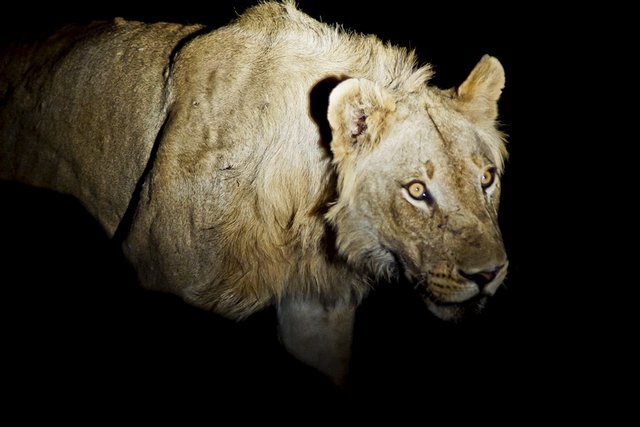
Young lion of South Luangwa NP, Zambia - meet at night game-drive
Lions’ population is kept as its strongest scale for the last years in particular countries. But a general trend of lion numbers in Africa shows a lasting decline. It’s very sad news indeed as the distant roaring of lions, which can be heard as far as 8km, is a common sound at night in the bush and is rather frightening, if you’re lying in a tent and can hear the lions coming closer. I should say that contrary to common belief lions are not afraid of open fires and fly-camping in the bush, visitors are recommended not to wonder around in the darkness. But hardly anyone could make an attempt of such walking around when lions are clearly heard nearby! A tent is, however, perfectly safe even if a whole pride decides to settle in front of it.
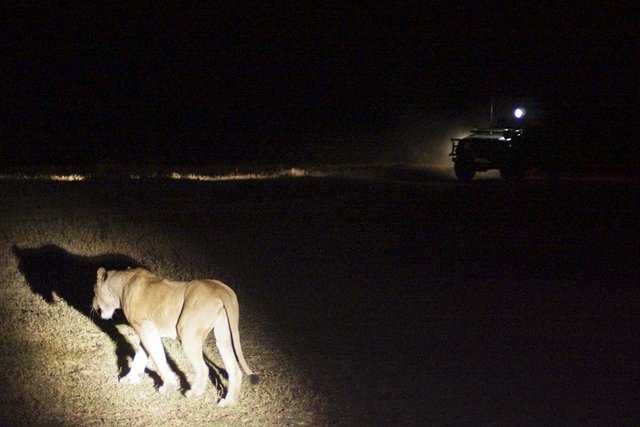
Lions are always more active at night
Some animals such as snakes and crocodiles have a bad image because of evil connotation, but lions are regarded as a symbol of majesty – the king of the beasts, the master of animal kingdom. In reality, the lions do not live up to human expectation. They simply behave like lions. If any chance given, they will steal the prey of other carnivores rather than hunt themselves. The females do most of the hunting and males takes over the prey and fill their stomachs first. Young lions are the last in the hierarchy to feed from a carcass and when prey animals are scarce, cubs may starve because the older ones including their mothers leave them nothing to eat. Cubs can also die because they are deserted by their mothers or killed by males who have recently taken over the pride. And in fact all other big predators like leopard or hyena will kill cubs any time they encounter them alone in the bush.
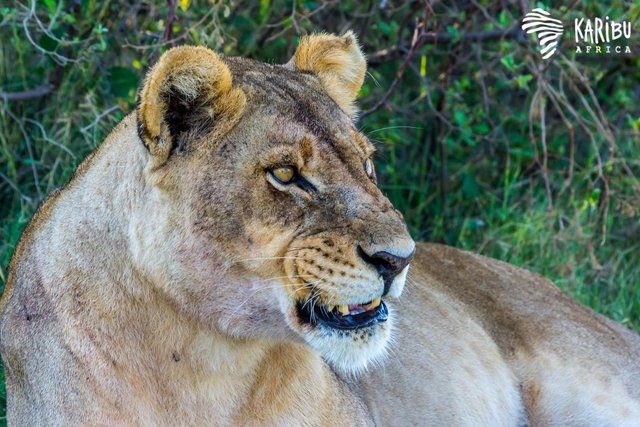
Lioness's faces are vivid. They are very skillful in expressing of plenty of emotions
I came across some lions and cubs showed of being in very bad condition, in different parks during my trips. But Mother Nature has main rule – the strongest one survives only. We may do nothing but watching all this, unfortunately. There is one case comes into my mind when people should step in to help lions in fatal situation. It was in Ngorongoro area in Tanzania where lion population was extremely close to the total extinction because of inbreeding of the prides living in the area. Those lions were not able to leave Ngorongoro and other lions could not come there from other places as well. Ngorongoro Crater is a closed caldera now and has it’s natural borders. Hence it happened that inbreeding was a reason of bad condition of Ngoro lions. They became much smaller, started to suffer from different deceases and even die in young age… People can do nothing except to introduce some other lions for cross-breeding. It was a successful story and now all is in order with Ngoro lions.
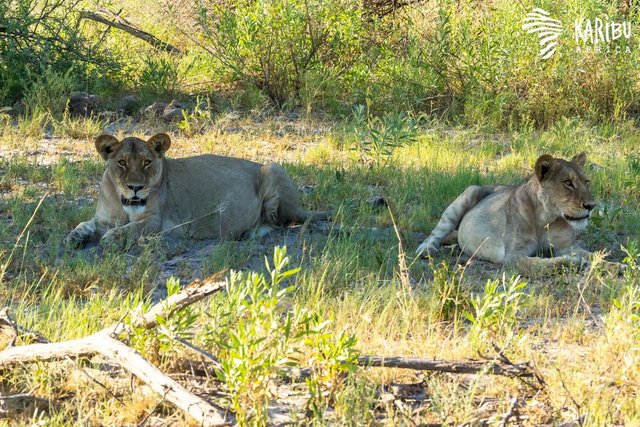
Lions relax in a shadow after good meal. Sometimes they are so full that can not even move or stand up. These lionesses are in perfect condition as live in the area rich of game to hunt
Regards to lion hunting. Let’s go on. Many attacks on prey animals, which can be anything from impala to a buffalo, are unsuccessful. And here is I can say that it’s clearly noticed by the researches watching lions in different parks that lions may specialize on particular prey and even pass these special hunting skills to their litters. For example, in such parks like Selous and some area in Okavango Delta lions are very successful on giraffes catch. In Hwange park in Zimbabwe lions even hunt on elephants on permanent basis! The main findings of different studies as regards predation showed that a pride of lions as a unit killed an animal of about 200kg once every four days, meaning that one lion had to make 13 kills of that size annually to obtain around 2500kg of meat it needed to survive. This basis figure extrapolated into something fairly awesome. If about 1000 lions ate only one species a year the total killed would come to 10560 impala, or 2520 wildebeest, or 2160 zebra, or 780 buffalo.
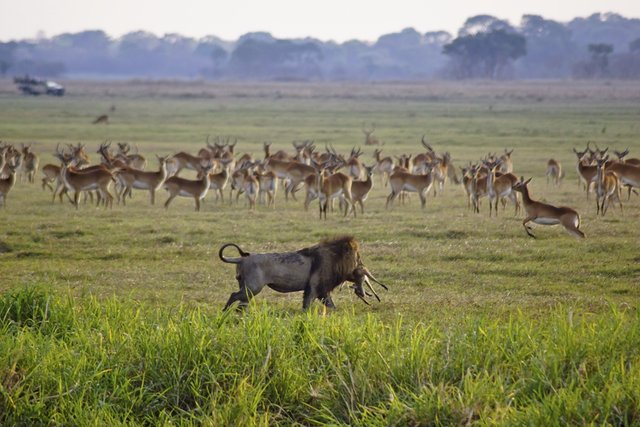
Successful hunt of big male. He caught this poor lechwe female just in front of the whole herd. He had to jump in water to do it, but sometimes lions could even swim.
We may talk a little bit about some myths of how lions make their kills. There is an opinion that a lion kills its prey by breaking its neck, but just in few kills observed you might see with any certainty that the neck has been broken or it caused its death. In general observation a smaller prey were either knocked down by a single blow of the forepaw or caught with both forepaws and then bitten in the neck or throat region. In large animals the final charge usually brought the lion alongside the prey or slightly behind it. Almost invariably the lion then leapt on to the back of the animal and grasped it with its forepaws in the shoulder and neck region. From this point two things may happen. In some cases prey lost its balance and fell, the lion falling with it. In other cases the lion would let itself slide off the animal, retaining its hold on the neck and pulling the prey down almost on top of it. In both cases the lion bite the animal in the throat again and hold it down until it stopped moving. In other words suffocation was the main cause of death in lion kills.
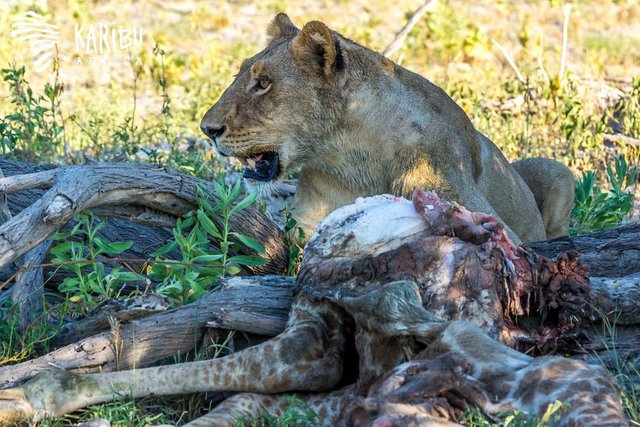
This is a lioness member of one pride living in Okavango Delta, Botswana. They are very keen and skillful on giraffes hunt.
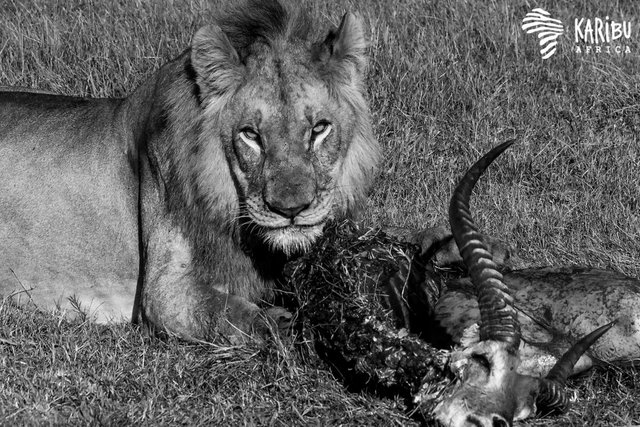
Even males have managed to hunt some time... This solitary lion male was very lucky to get lechwe bull for breakfast
And you will be very lucky if you’d managed to watch lions hunt in wild nature! All of wildlife photographers going to African safari do wish to make such pictures. There are some places where you will have more chances then ever. It’s Masai Mara and Serengeti during Great Migration season, some places in Botswana and South Africa, and in particular parks in Zambia and Zimbabwe. But the main rule you have to remember is that all depends on different things. It’s not a Zoo and animals are unpredictable. You should be patient and open-minded. And simply enjoy with all that you will manage to see. Particularly the lions on average are only active for about 4 hours a day. Until you have observed them for an extended period you have no idea how lazy they are and how much time you have to spend doing absolutely nothing. But you should hope for the best!)
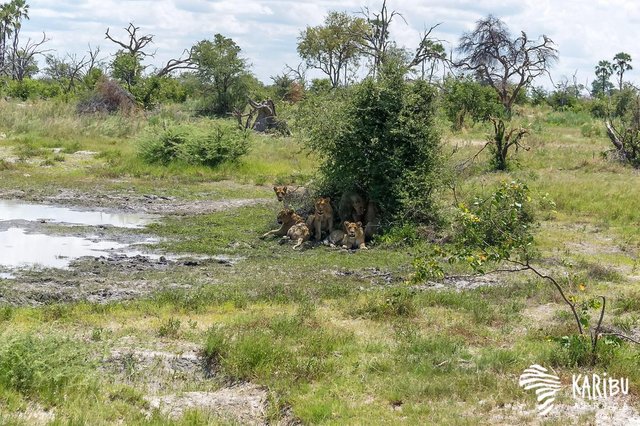
Pride of lions is relaxing during midday heat. As you can see they try keep close to water source. They can spend time in such way for for 20 hrs per day!
In conclusion I would like to wish any of you to come to Africa just to see the difference between wild animals behavior in wild parks to compare any Zoo visits. I assure you that once you will carry it out, your own vision of many things will change forever.
To be continued
You may follow my previous blogs called AFRICA NATURE DIARY here
What a great post @shumbahills
You have been scouted by @promo-mentors. We are a community of new and veteran Steemians and we are always on the look out for promising authors.
I would like to invite you to our discord group https://discord.gg/vDPAFqb.
When you are there send me a message if you get lost! (My Discord name is the same as here on Steemit)
I would be expecting you. Have a great day.
Hello @menoski and @promo-mentors! Thank you for your support) I tried to join you in Discord but I still did not receive a confirmation letter to may mailbox, hence still not able to chat(((